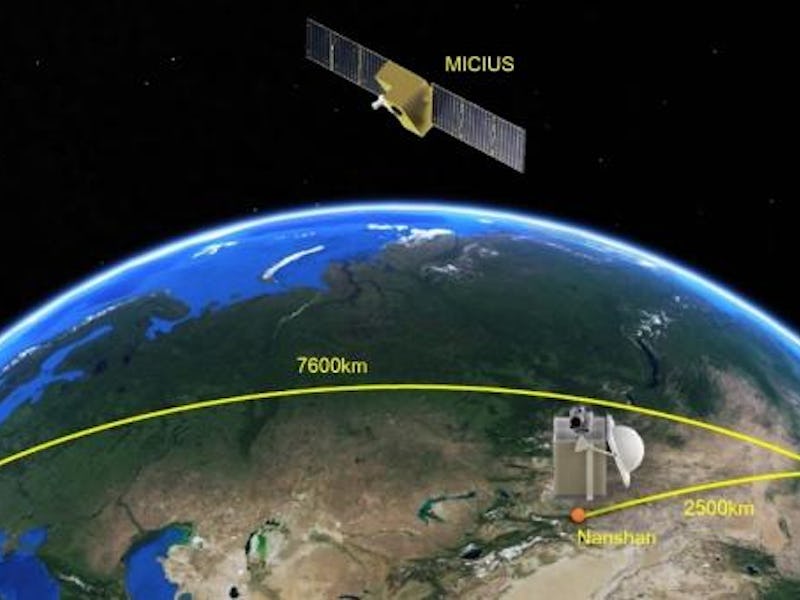The Quantum Internet Is a Big Step Closer Because of This Chinese Satellite
Transferring information through light particles.

In August 2016, Chinese physicists rocketed the world’s first beacon of the coming quantum internet into orbit. Instead of beaming live sports into your home, this satellite — nicknamed Micius after an ancient Chinese philosopher — was built to send and receive tidbits of information encoded into photons, or light particles.
Though it has only been operational for a couple of years, Micius has already made strides in proving how it can be used to securely beam quantum information across the world with little to no distortion, as the team of researchers behind it report Friday in Physical Review Letters. Sending data in this form would minimize security risks when sending highly confidential information through the internet and would jumpstart a whole new era of quantum communication.
A group of scientists from the Chinese Academy of Sciences designed and developed Micius. After they put it into space, they began working on quantum communication’s biggest problem. Previously, it was thought that information encoded as photons could only travel a few hundred miles. That’s because the optical fibers used to transport them on the ground would cause distortion and loss of information after roughly that distance, which would be a major stumbling block to a truly global quantum internet.
With Micius operational, the team set up five ground stations in China with the ability to communicate with the satellite from Earth. They were able to successfully beam photons to Micius from stations in Garz, Germany, Austria, and Xinglong, China.
One-time-pad file transfer.
Because the photons traveled through mostly empty space, they arrived completely unscathed and had delivered a message using quantum communication across a distance that was never thought possible. This proved that it’s possible to use this form of communication to move data across the globe.
Codifying information in light quanta — or individual photons — is also far more secure than conventional forms of cryptography. That’s because it uses quantum key distribution (QKD), which lets two users encrypt and decrypt messages with a randomly generated secret key known only to them. Also, the fact that it’s simply being sent in a quantum state makes it extremely difficult for an ordinary hacker to eavesdrop.
Just because this team was able to pull this off doesn’t mean quantum communication is on its way to replace conventional forms of communication, at least not yet. The infrastructure we’ve built around the internet works extremely well in getting information where it needs to be, so replacing it all to go quantum just wouldn’t be worth it.
Quantum communication would be much more effectively used by a smaller group of people who need the utmost security when they’re sending messages through the web.
For now, only the scientists involved with this research have access to this type of communication. But this latest proof of concept over long distances suggests we could see sectors that deal with security-sensitive information begin to start looking much more seriously at what the quantum internet has to offer.